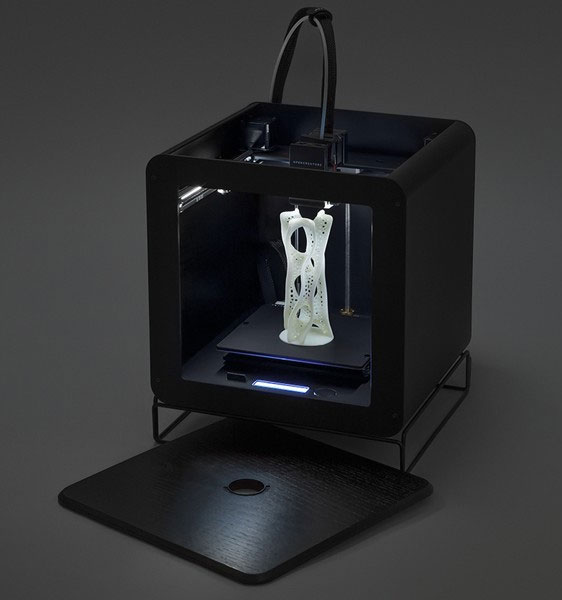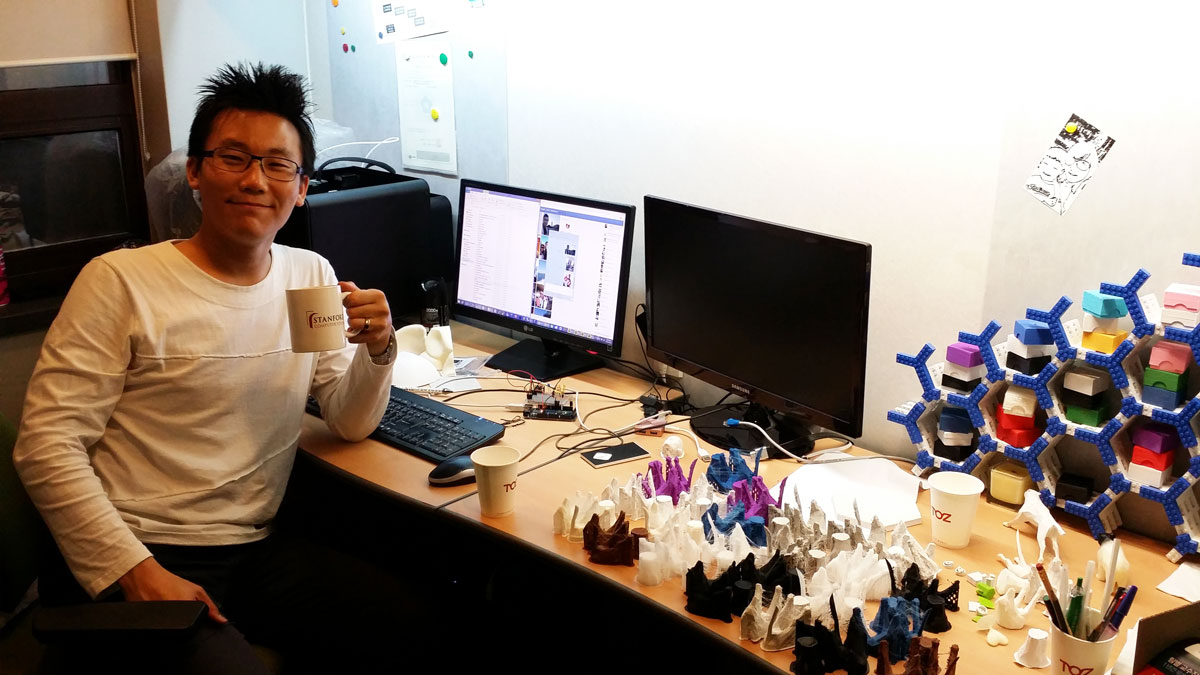Many say that 3D printers have opened up a new era for the one-person business. But can a person with a few desktop 3D printers really start their own company and make a profit? It seems that some can. Sang-Ho Yi, also known as “Mand.ro,” online, is a representative entrepreneur who opened up a one-person, start-up 3D printing company in South Korea last April and has made rapid progress in the Korean 3D printing community since. “Mandro”, fyi, is the English spelling of a Korean verb meaning “to make”.

On the rare occasion when things get quieter and people are not looking for him, he avidly conducts research regarding 3D printing and shares those ideas with others. Some of his interesting research projects involve detailed comparisons of 3D printing software – KISSlicer and Cura, for example. He has also measured the tension and density in various plastic 3D printing materials using a screw-type universal testing machine, the DA-272. And recently, he conducted a comparison of electricity spent on 3D printers in different places using either PLA or ABS.
And then, as a one-person 3D printing resource center for the South Korean maker community, Sang-Ho Yi most recently introduced an equation that explains the profit that a one-person 3D printing company can make depending on how many 3D printers they use and how many hours they operate at a recent 3D printing seminar in Seoul. The processes and conclusions of his research work, as well as other details about his activities can be found on his blog or on his website (in Korean).
When I spoke with Sang-Ho Yi, he described himself as a “hobbyist maker” but his educational background is in software development. He has walked a colorful career path. He has been at Samsung Electronics for around three years, and was also a visiting scholar at MobiSocial Computing Lab at Stanford University. At Samsung his official title was Senior Researcher/Engineer at the Software R&D Center and he was obsessed with user-centric approaches related to mobile technologies. He was also a Postdoctoral researcher at INRIA Grenoble, France and Seoul National University, Korea where he received his PhD from the School of Computer Science and Engineering of Seoul National University. You can find his personal details and research interests here (in English).
As impressive as all that is, it turns out that that was not the life he wanted to live. He decided on a sudden career shift after taking part in a ‘GO-VENTURE-FORUM’. The lecturer at the forum said, “we’ve got a long way to go thinking that we have an average of 82 years to live. We cannot always work for someone else. If you are going to start your own business, why don’t you do it earlier? If you keep working for a company, you might get good at taking and giving orders, but at some point you will lose your creativity and imagination that you once had, and eventually your life is likely to get boring.” The lecture lit up the passions that he had always had and helped him come to his dramatic direction-changing decision.
His primary goal is simple but ambitious. He wants to create a hub that connects all the available 3D printers in the world. He wants the hub or platform to benefit designers, makers, end-consumers, manufacturers and educational institutions. For now, he makes most of his profits from printing and educational programs. But as his company grows and he hires more employees, he wants to spend more time on software development, which is his specialty.
Lastly, when I asked him for any advice that he can give to would-be one-person 3D printing entrepreneurs, Sang-ho said: “it is a business field where people [will struggle to] make a profit without expertise and know-how with 3D printers. At first, 3D printing takes more time and resources than using 2D inkjet or laser printers. If your print fails, resources will be wasted lowering your productivity, not to mention the sense of frustration. And 3D printing has a much higher chance of failure than other kinds of printing. And a good print is not the end of the process. When people use desktop 3D printers, frequently the output does not fully satisfy customers. To satisfy their needs, you should be able to do post-processing, including putty work, painting, and so on. Also, the work requires insight to see through 3D models customers give you and you should be able to tell customers where to improve or why their model will not work. Those are what I think is some of the representative skills necessary to start a 3D printing company, but there are other needed skills too.” He also added, “Some people think, ‘Oh, he is running a 3D printing company, then I can do it too.’ This kind of mindset will never work in this industry. The industry is moving really fast and it is hard to anticipate where it is headed. You are more likely to succeed if you keep attempting fresh and creative approaches and catch up with the latest cutting-edge technology.”




